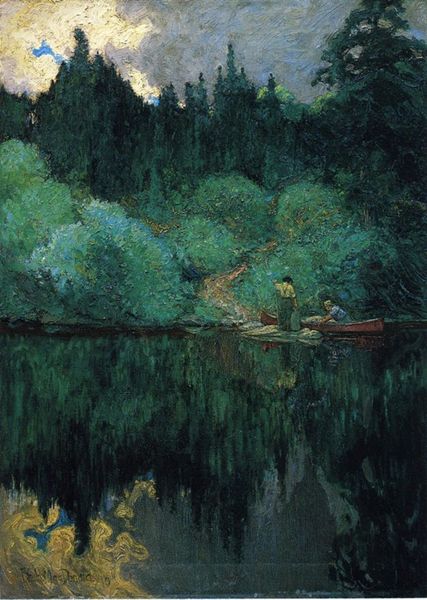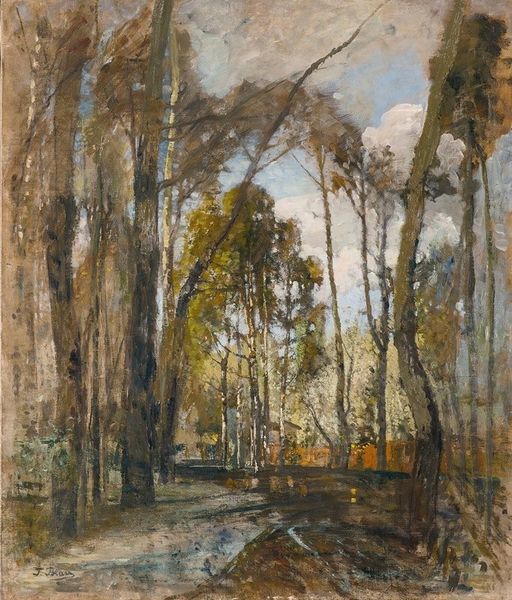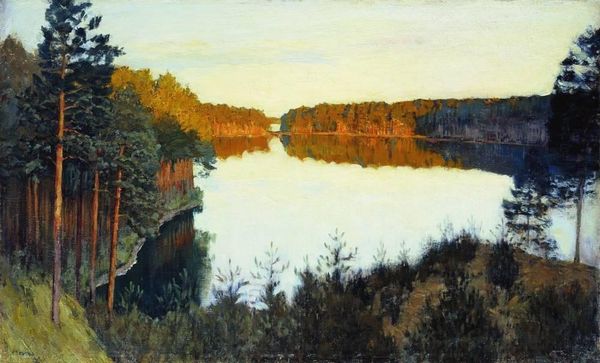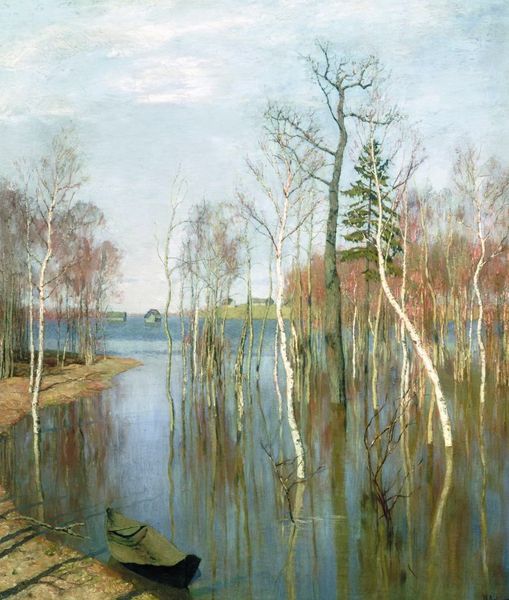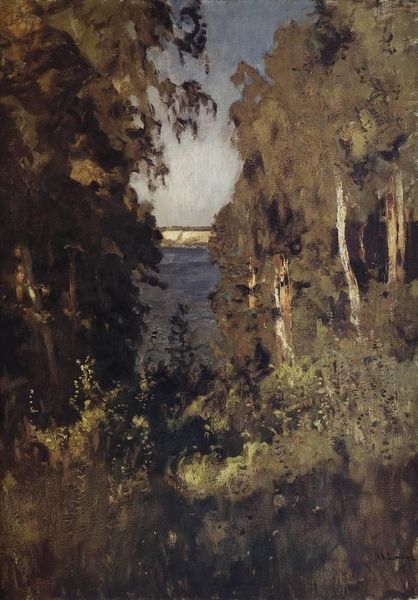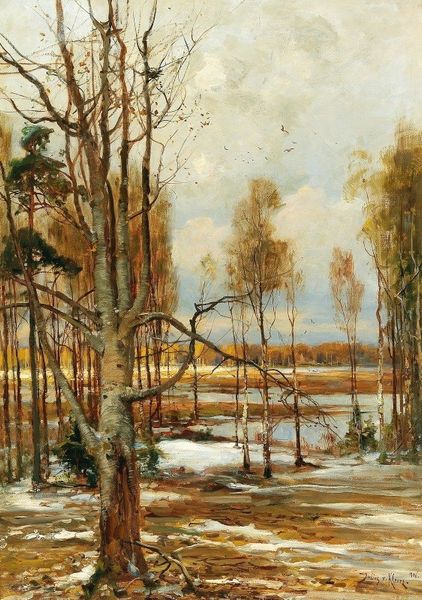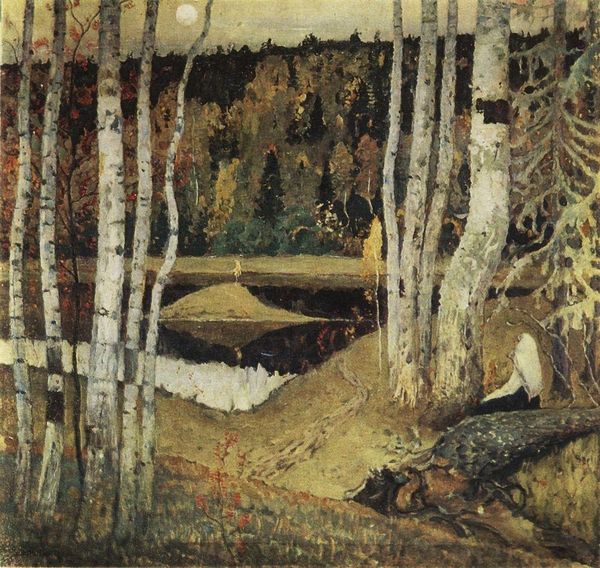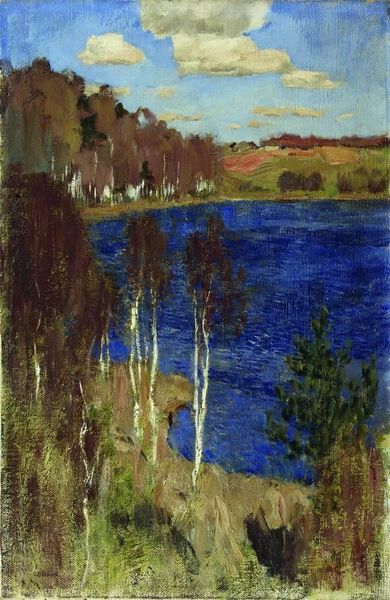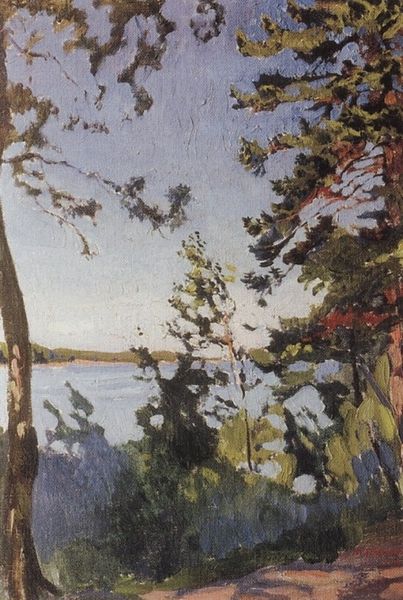
plein-air, oil-paint
#
tree
#
plein-air
#
oil-paint
#
landscape
#
impressionist landscape
#
oil painting
#
forest
#
natural-landscape
#
realism
Copyright: Public domain
Curator: This is Arkady Rylov's "Quiet Lake," painted in 1908. Editor: There's a peaceful stillness here. The painting’s vertically is very grounding, it makes you feel you’re really in there, in the forest, seeing how those massive trees rise from the earth, rooted like our ideas about the world. Curator: Rylov worked extensively en plein air, and you can see that influence in the realism and natural landscape depiction. What is interesting, though, is how paintings of such calming vistas coincided with an era of massive socio-political changes. Editor: Exactly, it's almost as if Rylov intentionally selected a subject, a place and time, relatively untouched by modernity's effect on labor or access to natural resources...an interesting push back considering he painted this right before massive social upheaval in Russia! And look at the labor it implies! Someone is out in that boat - what is that work like, I wonder? Curator: Considering Rylov’s involvement with the artistic associations of his time, his art represents more than just personal preference. There was this pervasive attempt to represent idealized, "pure" Russian landscapes as a bulwark against industrialization and the social changes of the time. The forest, as both material for construction and aesthetic retreat, played a really crucial cultural role at the time. Editor: Agreed, even the material itself—oil paint on canvas—suggests a certain bourgeois sensibility. It makes one consider: Who could afford to purchase this image of a quiet lake and perhaps long for what has been lost during the march toward industrialization? Was the fishing being done to catch a meal, or just pass the time... Curator: Rylov did go on to contribute designs to Soviet propaganda posters, but here in “Quiet Lake”, we see an attempt to create an idealized vision, very much rooted in pre-revolutionary sensibilities. Editor: Absolutely, this idyllic scene raises profound questions about representation, labor, and who gets to consume images like these during a crucial period of industrialization and political upheaval. Curator: It offers an intriguing glimpse into the societal anxieties of the time, filtered through an artistic lens, that yearned for an unchanging world.
Comments
No comments
Be the first to comment and join the conversation on the ultimate creative platform.
